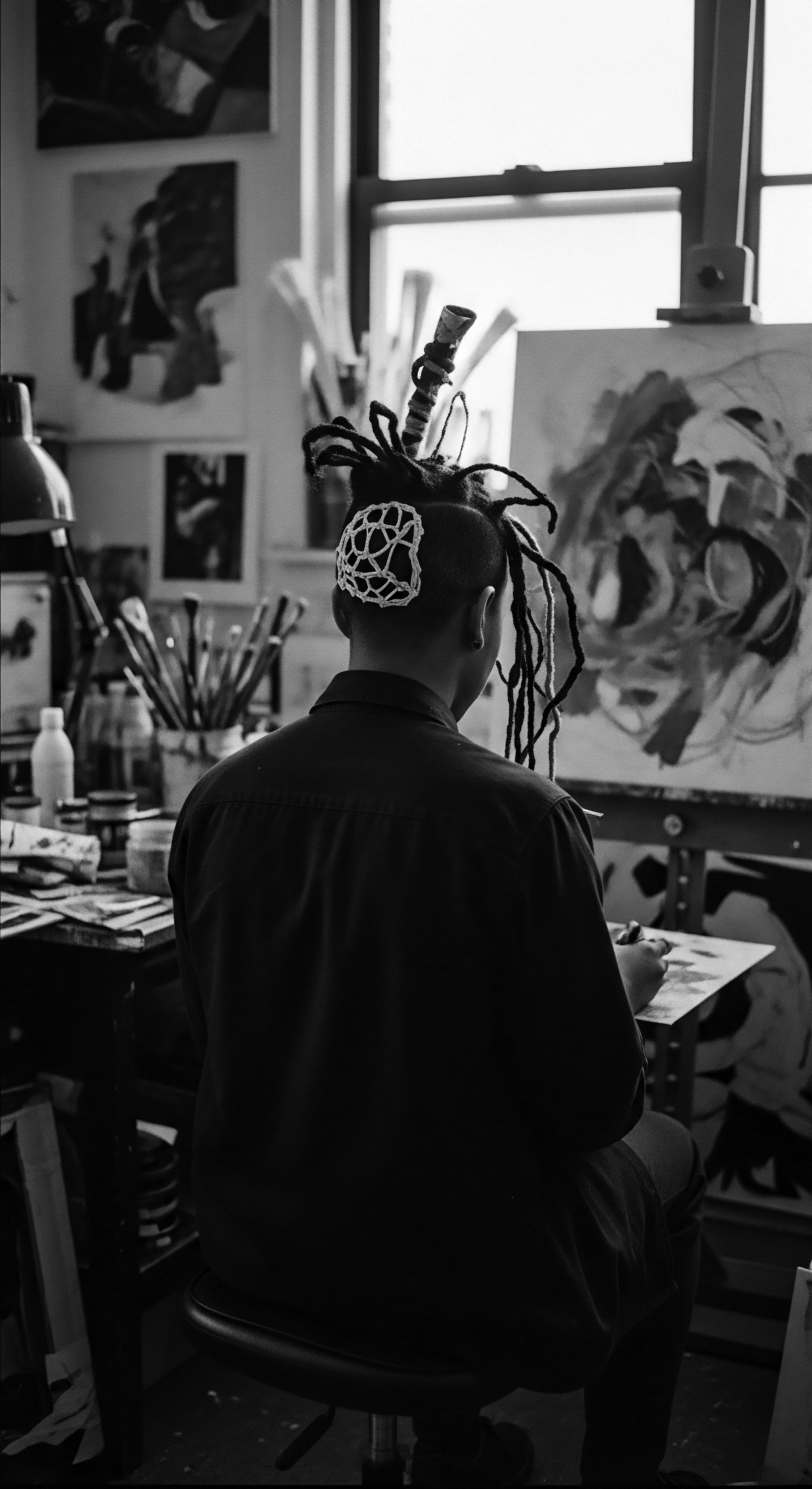
Roots
To truly comprehend how historical head coverings safeguarded the vitality of textured hair, we must first journey to the very foundations of the strand itself. This exploration begins not merely with scalp and fiber, but with the ancestral knowledge, the whispers across generations that understood hair as a living extension of self, a repository of identity and resilience. Our path leads us through the inherent structure of textured hair, a unique biological wonder, and how early communities, with intuitive wisdom, crafted protections against the elements.
Consider the singular morphology of textured hair, its helical coils and elliptical cross-sections. Unlike straighter hair types, the natural curvature of these strands means that the cuticle, the hair’s outermost protective layer, often possesses a greater lift or openness. This characteristic, while lending magnificent volume and character, also presents a distinct challenge ❉ moisture, that life-giving element, escapes with greater ease. The scalp’s natural sebum, meant to travel down the hair shaft, finds its path obstructed by the tight spirals, leaving the lengths and ends yearning for hydration.
This fundamental understanding of hair’s architecture, though perhaps not articulated in modern scientific terms, was keenly observed and addressed by those who came before us. Their practices were not born of happenstance but from generations of lived experience and keen observation.
The intrinsic structure of textured hair necessitates careful moisture management, a truth known to ancestral practitioners long before scientific explanation.
The early caretakers of textured hair did not possess microscopes to examine the cuticle, yet their understanding of hair’s needs was profound. They knew the sun could parch, the wind could strip, and daily friction could compromise the delicate coils. Their solution, often simple in form yet profound in effect, involved enveloping the hair.
These coverings, whether simple cloths or elaborately tied wraps, served as a second skin, a protective barrier against the environmental forces that sought to rob hair of its precious water. They were, in essence, mobile microclimates, maintaining a localized environment of higher humidity around the hair.
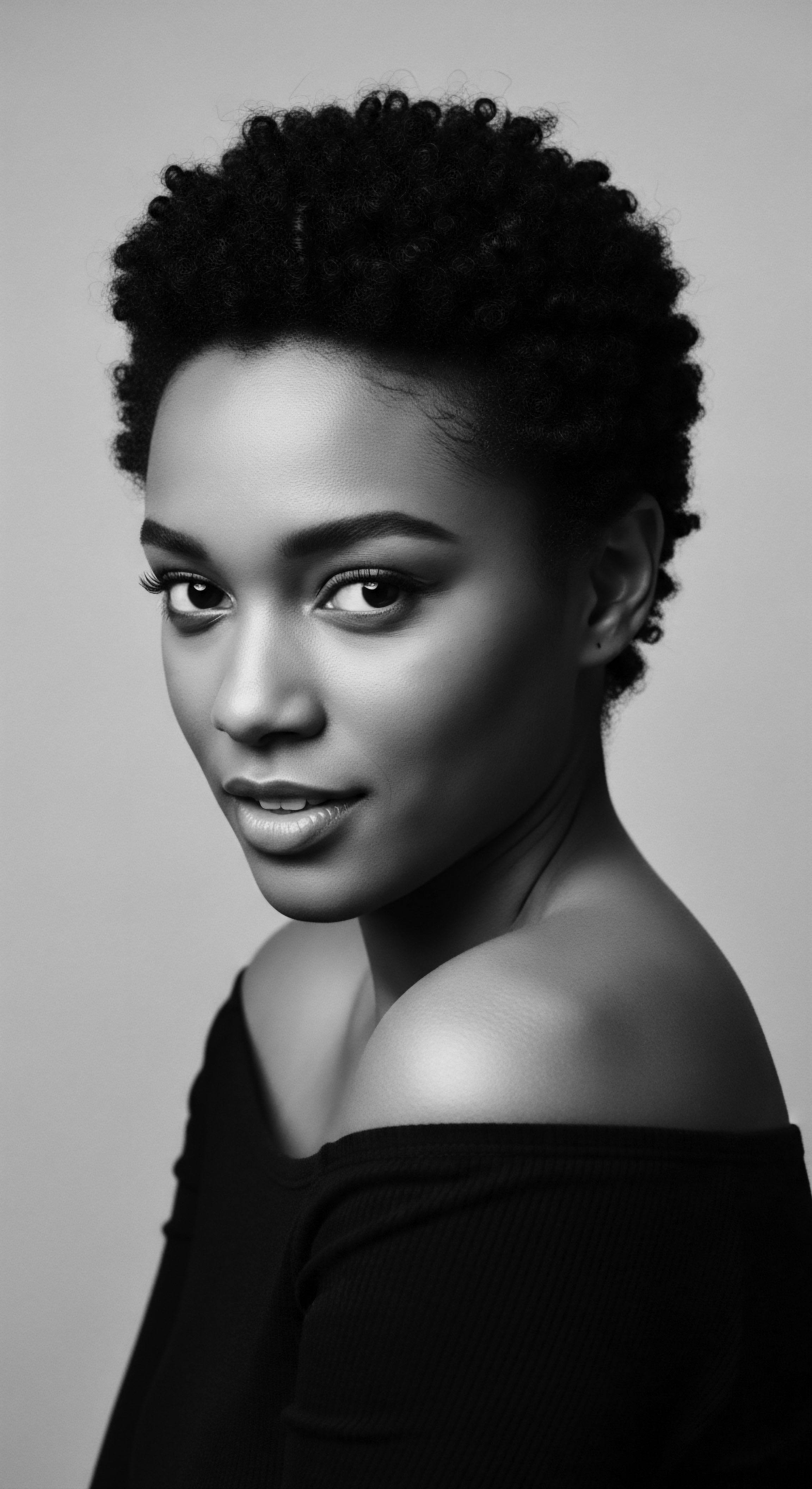
Hair Anatomy and Its Ancestral Understanding
The very genetic blueprint that gives rise to coils and kinks also dictates a certain fragility in comparison to hair types with more closed cuticles. The twists and turns along a single strand represent potential points of vulnerability, places where the cuticle can lift and expose the inner cortex to damage. This inherent vulnerability made protection paramount. Ancestral traditions, therefore, did not simply adorn the head; they actively safeguarded the hair’s structural integrity.
The use of certain materials in head coverings was a testament to this understanding. Fabrics like finely spun cottons, linens, and later, imported silks, were chosen for their smoothness and their ability to create a gentle, enclosed space for the hair.
This wisdom extended to hair growth cycles as well. Hair, in its various phases of growth, shedding, and rest, benefits from reduced manipulation. Head coverings, by securing styles and minimizing daily brushing or combing, helped preserve hair through its complete cycle. This reduced friction not only prevented breakage but also allowed natural oils to redistribute more evenly along the hair shaft, aiding in its innate hydration mechanisms.
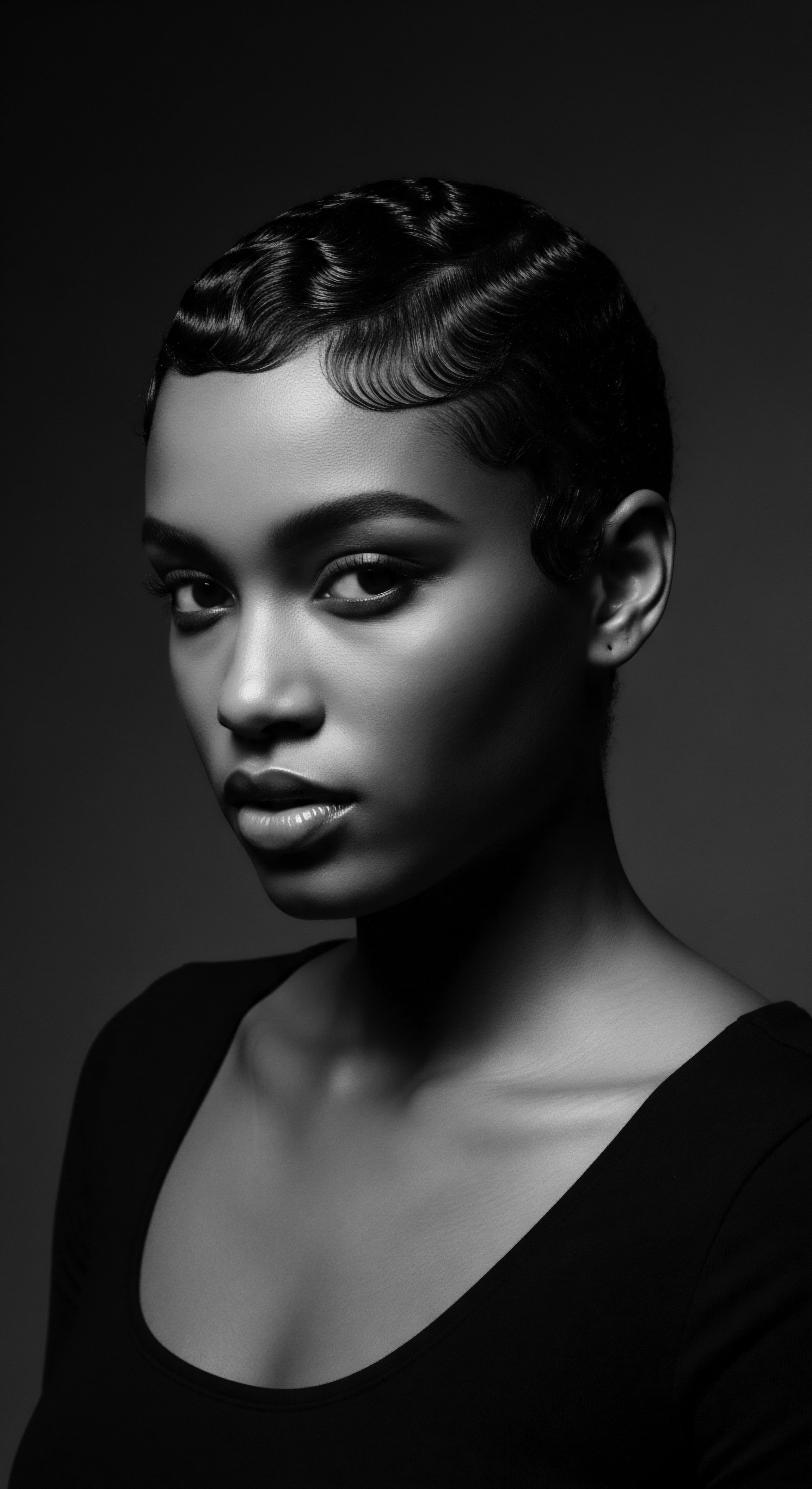
Early Classification and Hair Protection
While formal hair classification systems like those of modern dermatology are relatively recent, historical communities held their own ways of distinguishing hair types, often linking them to familial lineages or regional variations. These distinctions, though informal, guided the specific applications of care, including the selection and wearing of head coverings. A woman with particularly delicate or fine coils might adopt a style of wrapping that offered maximum enclosure, while another with denser, more robust strands might opt for a lighter covering that still offered atmospheric protection. This bespoke approach, rooted in observation and communal wisdom, reflects a sophisticated understanding of hair’s diverse needs.
| Material Cotton (Finely Woven) |
| Traditional Use Context Everyday coverings, work wraps |
| Moisture Retention Property Absorbent yet provides a breathable barrier, preventing excessive evaporation. |
| Material Linen |
| Traditional Use Context Similar to cotton, often for lighter wear |
| Moisture Retention Property Offers good airflow while still creating a layer of defense against environmental dryness. |
| Material Silk (Later introduced) |
| Traditional Use Context Luxury, ceremonial, nightwear |
| Moisture Retention Property Smooth surface reduces friction, sealing in moisture and preventing cuticle damage. |
| Material These materials, chosen with ancestral discernment, created optimal microclimates for hair health. |
The choices of materials were not arbitrary. They were informed by centuries of practical application. Consider the difference between a rough, coarse fiber and a smooth, polished one.
The latter, when in contact with the hair, would cause less abrasion, thus preserving the hair’s outer layer and its ability to hold water. This practical knowledge, passed down through generations, shaped the very form and function of head coverings across varied cultures.

Ritual
The story of how historical head coverings protected textured hair’s hydration cannot be told without a thoughtful look at ritual. Here, the act of covering one’s hair transcends simple practicality, becoming deeply intertwined with daily habits, communal identity, and expressions of self. The application of wraps and scarves became an integral step within larger systems of hair care, a silent agreement between the individual and their heritage to honor and preserve their unique tresses.
For many African and diasporic communities, hair care was a collective endeavor, a time for bonding and shared wisdom. During these moments, the securing of a head covering would often follow a meticulous regimen of cleansing, oiling, and styling. The covering then served as the final seal, a tender shield for the styled hair beneath. This systemic approach underscored the understanding that hydration was not a standalone goal but a continuous state achieved through layers of attention and protection.
The practice of wearing head coverings was often the crowning act in elaborate care rituals, ensuring hair’s ongoing vitality.
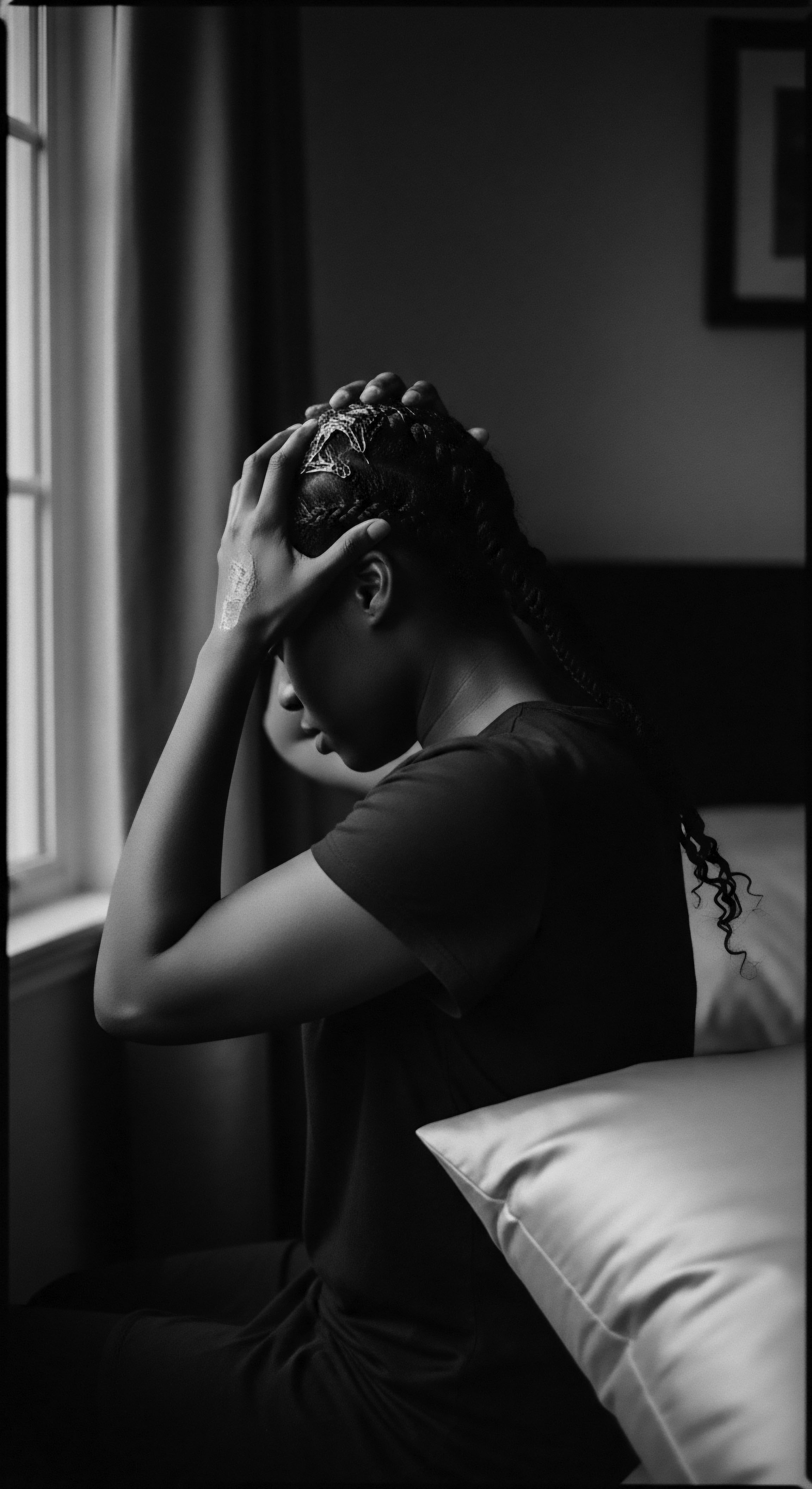
Protective Styling Ancestry
Many traditional hairstyles, such as various forms of braids, twists, and bantu knots, were inherently protective. They minimized tangling, reduced exposure to environmental aggressors, and stretched the time between manipulations. Head coverings enhanced these styles, offering an additional layer of preservation.
- Gele ❉ In West African cultures, particularly among the Yoruba and Igbo people of Nigeria, the elaborate headwrap known as the Gele signifies celebration and status. It also serves a practical purpose, safeguarding intricate hairstyles and preserving their integrity during long events or daily wear.
- Duku/Dhuku/Doek ❉ Across Southern and Central Africa, these head wraps, known by various names, have protected hair from dust, sun, and other harsh elements during daily activities, allowing for extended periods between washes and minimizing moisture loss.
- Tignon ❉ In 18th-century Louisiana, the Tignon laws mandated that Black women cover their hair. While intended as a marker of social distinction, these women defiantly transformed the tignon into a fashion statement, using luxurious fabrics and elaborate styles. This act of reclaiming the head covering also inadvertently offered a protective layer for their hair, mitigating the dehydrating effects of the climate and daily life (Okereke, 2021). This historical example demonstrates how even under duress, the practical benefits of hair protection, alongside cultural resistance, found expression.
These coverings acted as a physical barrier against dust, pollutants, and the sun’s drying rays. The very act of wrapping also compressed the hair gently, holding moisture within the styled coils. This was not a passive act; it was a purposeful choice, a commitment to preserving hair’s health and beauty.
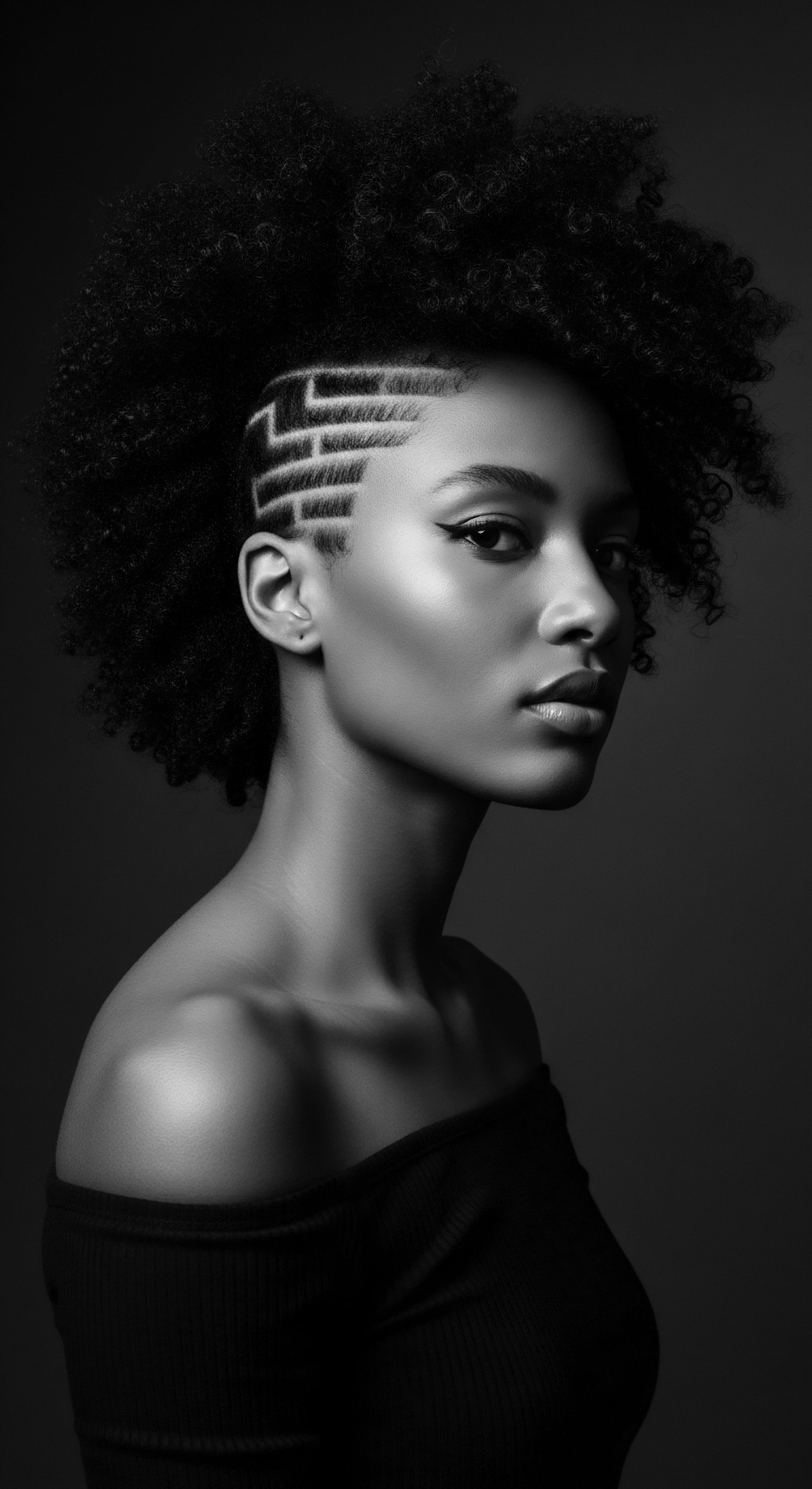
Traditional Styling and Coverings
The tools and techniques employed alongside head coverings speak to a deep understanding of textured hair. Wide-tooth combs, bone pins, and natural oils were often part of the preparation. Once the hair was moisturized and styled, the covering would be applied, ensuring that the labor of care was not undone by external factors.
Consider the significance of hair oiling practices, prevalent across many African communities (Africa Imports). Oils derived from shea, coconut, or various plant seeds were applied to the hair and scalp to nourish and seal in moisture. A head covering worn over freshly oiled hair would help retain these emollients, preventing their rapid evaporation. This synergy between internal care and external protection fostered conditions conducive to sustained hydration.
Beyond environmental protection, head coverings also played a role in maintaining the definition of natural styles. A fresh set of bantu knots or braids could be preserved for days, sometimes weeks, by the consistent wearing of a covering, especially during sleep. This extended the longevity of styles, reducing the frequency of manipulation and thus minimizing breakage, a critical aspect of length retention for textured hair.
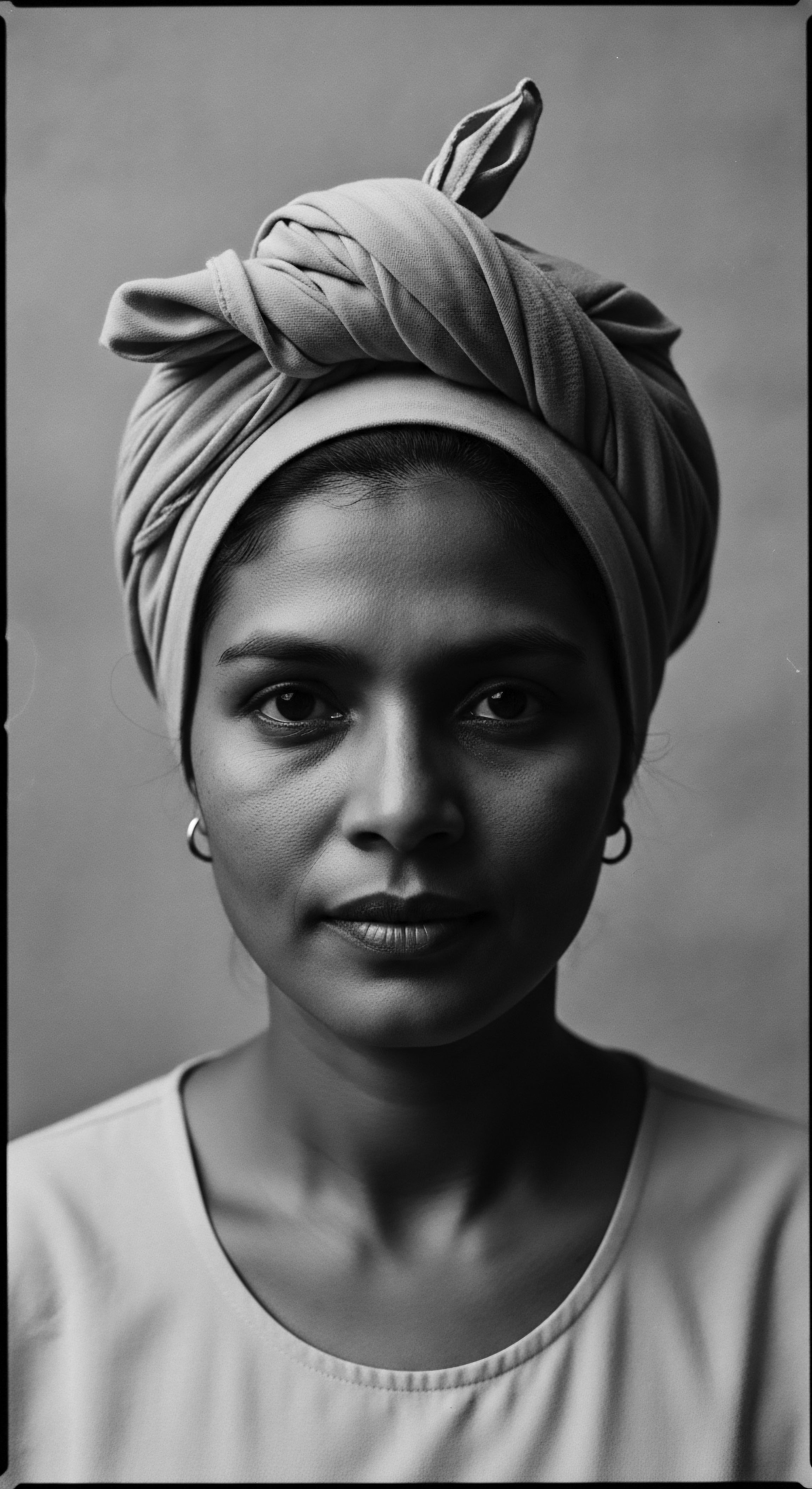
Cultural Expressions and Hair Protection
The artistry involved in tying and adorning head coverings speaks to their cultural resonance. From the intricate folds of a Ghanaian duku to the vibrant patterns of a Caribbean headwrap, these coverings were not merely functional. They communicated social status, marital status, religious affiliation, and personal aesthetic. In the context of hair health, this meant that the practice of covering hair was woven into the very fabric of identity, ensuring its continuity across generations.
For instance, the wearing of headwraps by enslaved African women in the Americas, often enforced by laws like the Tignon Law in Louisiana, became a paradoxical symbol of resistance and self-assertion. While meant to subjugate, these women transformed them into statements of dignity and beauty, using fine fabrics and elaborate ties (Obé Headwear, 2024; sonson, 2021). This act of reclaiming the headwrap for identity also served to preserve the hair underneath from harsh conditions, highlighting the multifaceted ways in which coverings contributed to both spirit and strand. The historical records offer a glimpse into a time when hair protection and cultural assertion walked hand-in-hand.
| Style/Region Gele (West Africa) |
| Cultural Context Celebratory, status display |
| Hair Hydration Benefit Maintains intricate styles, protects against external dehydration, reduces manipulation. |
| Style/Region Duku/Doek (Southern Africa) |
| Cultural Context Daily wear, spiritual observance |
| Hair Hydration Benefit Shields from dust and sun, aids moisture retention over longer periods. |
| Style/Region Tignon (Louisiana Diaspora) |
| Cultural Context Reclamation of identity (post-Tignon Laws) |
| Hair Hydration Benefit Physical barrier against elements, preserves styled hair from dryness and breakage. |
| Style/Region These varied practices underscore the enduring legacy of head coverings in safeguarding textured hair. |
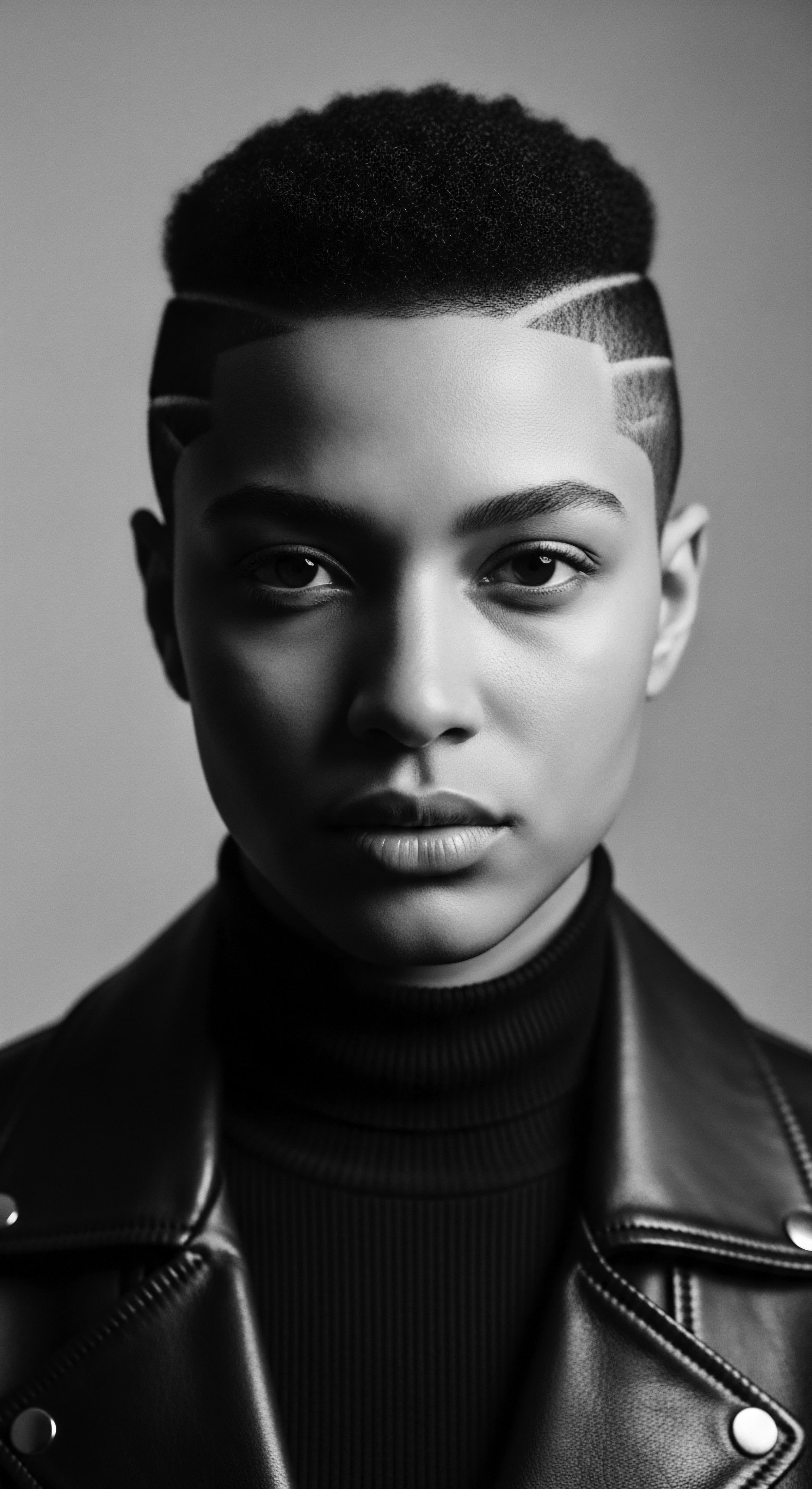
Relay
The enduring wisdom of ancestral practices concerning head coverings provides a powerful relay of knowledge, connecting historical understandings of hair hydration to contemporary care. This continuity reveals that the solutions to hair’s moisture needs are not new inventions but refinements of deeply rooted traditions. The interplay between fabric, hair biology, and environmental factors, once intuitively grasped, now finds validation in modern scientific inquiry, reinforcing the profound ingenuity of those who came before.
At the heart of this relay stands the core principle ❉ the creation of a stable, moisture-rich microclimate around the hair. Textured hair, with its propensity for moisture loss due to its structural characteristics, thrives in environments that minimize evaporation. Historical head coverings, crafted from materials that gently encased the hair, effectively slowed down the rate at which water escaped from the hair shaft, thus maintaining its pliability and preventing brittleness.
Historical head coverings acted as microclimates, preserving hair’s hydration by minimizing evaporation.
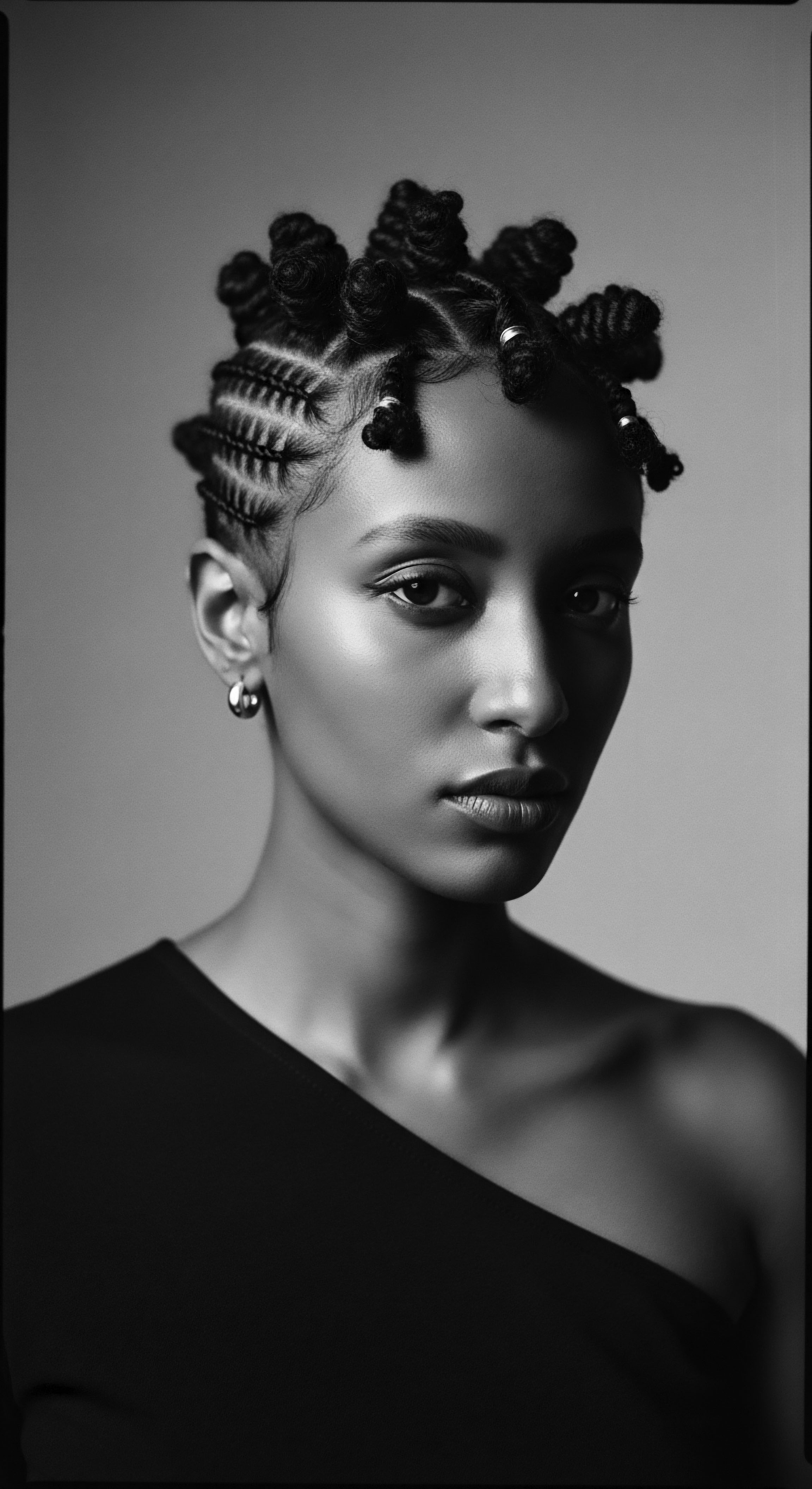
Nighttime Sanctuary and Bonnet Wisdom
Perhaps one of the most direct legacies of historical head coverings for hydration is the modern nighttime ritual involving satin or silk bonnets and pillowcases. This practice, widespread within the Black and mixed-race hair community, is a direct descendent of ancestral methods aimed at preserving hair integrity during sleep. Cotton pillowcases, though soft to the touch, possess absorbent fibers that draw moisture from the hair. They also create friction, leading to frizz, tangles, and ultimately, breakage (Afriklens, 2024).
The smooth, non-absorbent surface of silk or satin, by contrast, allows hair to glide freely, reducing friction to a minimum. This mechanical protection directly impacts hydration by:
- Minimizing Moisture Absorption ❉ Unlike cotton, satin and silk do not wick away the natural oils and applied products from the hair, allowing them to remain on the hair shaft where they belong (sonson, 2021).
- Reducing Cuticle Disturbance ❉ The smooth surface keeps the hair’s outer cuticle layer lying flat. A flat cuticle reduces the surface area for water evaporation and maintains the hair’s natural moisture barrier.
- Preserving Style Definition ❉ By preventing hair from rubbing against rough surfaces, bonnets help maintain the definition of styles like braids, twists, and curls, reducing the need for daily manipulation that can lead to dryness and damage.
This modern adherence to satin or silk protection at night is a testament to the ancestral understanding that undisturbed hair in a controlled environment retains its hydration. It’s a direct continuation of practices that sought to protect hair during periods of rest, ensuring it remained pliable and healthy for the day ahead.
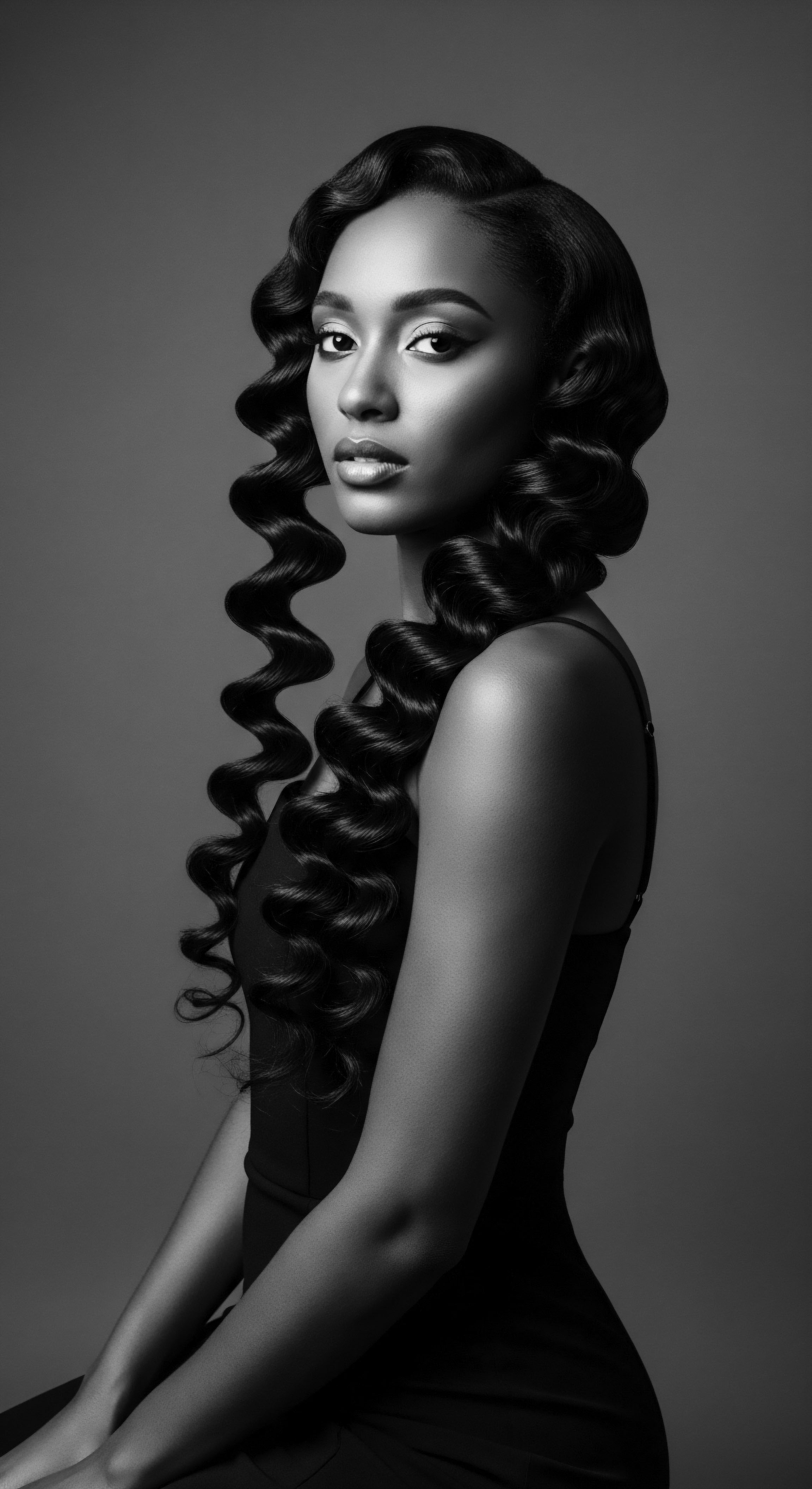
Ingredients and Environmental Factors
Beyond the physical barrier, head coverings worked in concert with traditional emollients and humidifiers. Shea butter, often applied to hair to seal in moisture, would have its effects amplified by the warmth and enclosure provided by a headwrap (Africa Imports, 2025). The covering would help the butter penetrate the hair shaft more effectively, rather than evaporating into the atmosphere. This holistic approach recognized that true hydration came from a combination of internal nourishment and external protection.
Consider the challenging environments from which many textured hair traditions emerged – hot, arid climates where direct sun exposure and dry winds are prevalent. In such conditions, hair is particularly susceptible to rapid moisture loss. Historical head coverings served as a vital defense, intercepting direct sunlight and wind, both of which accelerate water evaporation from the hair surface. The fabric created a buffer zone, trapping a layer of humid air close to the scalp and hair, thereby maintaining a more stable moisture balance than if the hair were left exposed.
The significance of head coverings in protecting textured hair’s hydration is also underscored by the historical context of necessity. For enslaved populations, access to elaborate hair care products or ample washing facilities was severely limited. In such circumstances, head coverings became an invaluable tool for maintaining basic hair hygiene and health, preserving hair for longer periods between infrequent washes.
This functional aspect highlights the enduring ingenuity of these practices in adverse conditions. Okereke (2021) discusses how headwraps, enforced by law, became a symbol of Black women’s defiance and a means to protect hair, underscoring their dual role in cultural assertion and hair preservation.

How do Historical Head Coverings Support Ancestral Wellness Philosophies?
Ancestral wellness philosophies often perceived the body as an interconnected system, where external practices reflected internal well-being. Hair, considered a spiritual antenna or a conduit to the divine in many cultures, was treated with reverence. Protecting hair with coverings was not just about physical health; it was about honoring one’s connection to heritage and spirit. This holistic view reinforces the idea that the physical protection offered by head coverings for hydration was deeply intertwined with a broader philosophy of care and respect for the body and its ancestral lineage.
The meticulous art of tying a headwrap, or the selection of a bonnet, becomes a meditative act, a moment of connection to a long line of ancestors who performed similar rituals. This continuous practice, spanning generations, serves as a living archive of wisdom. It teaches us that hydration for textured hair is not merely a scientific equation but a deeply cultural endeavor, sustained through intentional practices and a profound respect for hair’s unique nature.
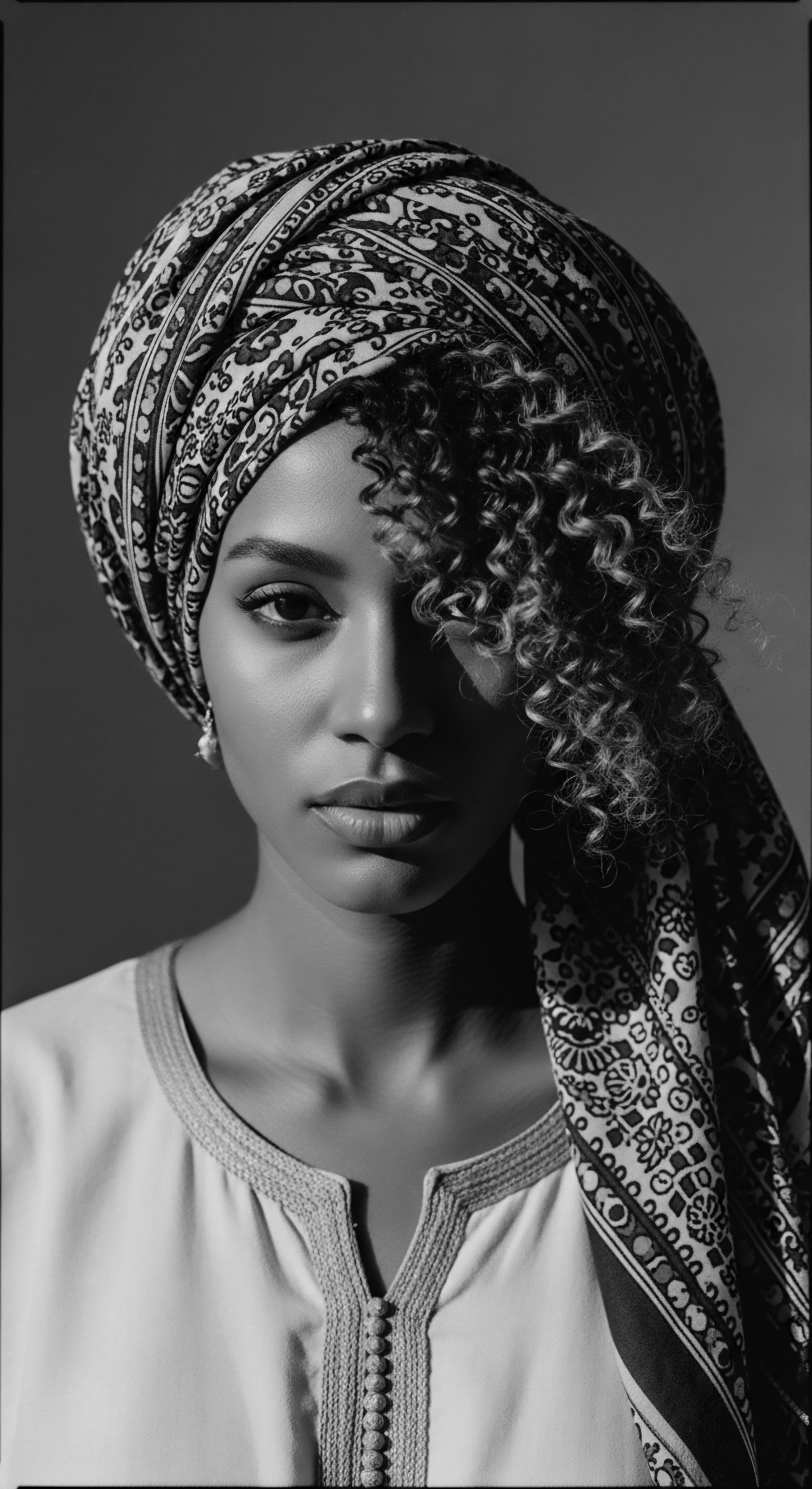
Reflection
The journey through the history of head coverings, their profound connection to textured hair’s hydration, and their enduring legacy is a powerful meditation on the “Soul of a Strand.” Each coil, each curve of textured hair, carries within it the echoes of ancestral wisdom, the resilience of generations, and the unwavering commitment to self-preservation and identity. The simple cloth, transformed into a shield or a statement piece, stands as a testament to human ingenuity and the deep understanding of hair’s unique needs.
We see how a practice, born of environmental necessity and refined through cultural expression, found its ultimate purpose in preserving hair’s vital moisture. From the protective wraps worn in daily life to the elaborate headties signaling status and celebration, the common thread is a profound respect for hair’s well-being. These historical coverings were not just adornments; they were living archives of care, passed down through the gentle hands of mothers, grandmothers, and community elders.
The insights gained from these ancestral practices continue to inform our modern understanding. The widespread adoption of satin and silk for nighttime protection directly speaks to the continuous relay of wisdom, validating that what was intuitively understood centuries ago holds true today. Our understanding of hair anatomy and atmospheric impact only serves to underscore the profound effectiveness of these time-honored methods. The legacy is a vibrant, unbroken line, teaching us that true hair wellness is a harmonious blend of inherited knowledge, scientific clarity, and a heart full of purpose.
The textured hair journey is a continuous exploration of identity, a celebration of heritage, and a commitment to holistic well-being. The head covering, in all its historical forms, stands as a symbol of this ongoing narrative, a quiet yet powerful guardian of each strand’s vibrant, hydrated truth. Its story reminds us that the quest for hair health is, at its essence, a journey of self-discovery and connection to a rich, living past.
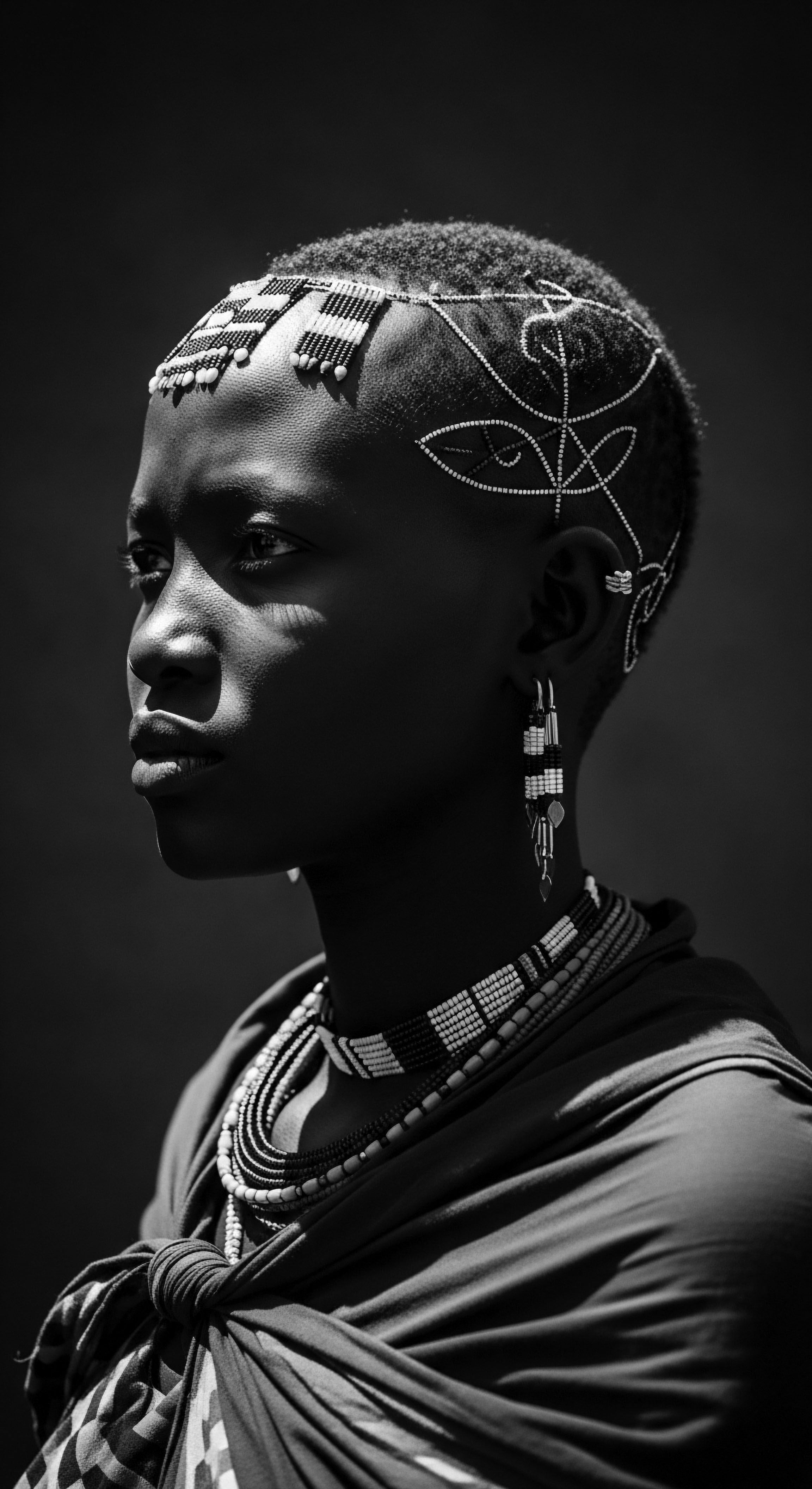
References
- Africa Imports. (2025). Traditional African Secrets For Long And Healthy Hair.
- Afriklens. (2024). African Hairstyles ❉ Cultural Significance and Legacy.
- Obé Headwear. (2024). Significance of headwraps.
- Okereke, E. (2021). Sartorial insurgencies ❉ Rebel women, headwraps and the revolutionary Black Atlantic. Feminist Media Studies, 21(8), 1272-1288.
- sonson. (2021). The History and Symbolism of Hair Wrapping Across the African Diaspora.
